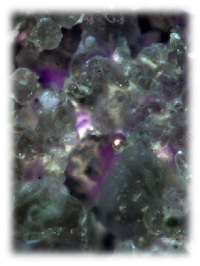Investigation of dielectrophoretic effects in porous structures
The recovery of submicron particles, especially nanoparticles, is becoming more and more attractive. Various approaches for separating, recovering and redispersing nanoparticles, such as ultracentrifugation, solvent evaporation, the addition of antisolvent carbon dioxide, and temperature control are being actively investigated. However, all of the technologies mentioned above are top-down methods and batch wise process with high energy consumption and cost. The conventional method often used in industry is membrane filtration, which could separate nanoparticles continuously due to a much smaller pore size compared to particles. However, fouling in membrane filtration system is inevitable. Nanoparticles presented on the membrane surface and in the pores may significantly and rapidly reduce the permeate flux, and even block the membrane resulting in a stopped filtration process. Dielectrophoresis (DEP), an effect of particle motion caused by dielectric polarization in inhomogeneous electric field, is believed to be a very promising bottom-up technology with proved capability of highly selective nanoparticle manipulation. The DEP force is proportional to the volume of particles and voltage squared, but inversely proportional to the cubic of distance between electrodes. As a result, the manipulation of nanoparticles requires either very high voltage input, or tiny electrodes geometry. Therefore, a method, which could bridge the huge scale difference between electrode distance and nanoparticle for a high throughput and low energy consumption, is required. Due to the dielectric polarization of porous structure in electric field, the local resulting inhomogeneous electric field around pores can be very high and could trap nanoparticles at/in pores. The trapped nanoparticles could be redispersed by a backwashing process. This approach is dependent on the properties of membrane such as polarizability and electric conductivity, and the structure of the membrane. In our preliminary work, we succeeded in applying DEP for intensifying cross-flow filtration process, in which DEP was applied to trap and redisperse nanocapsules (400 nm diameter) in a macro-porous filter material with a separation efficiency of 89 %. So this project is aimed to understand the influence of parameters of porous media on dielectrophoretic effect of submicron particles.



